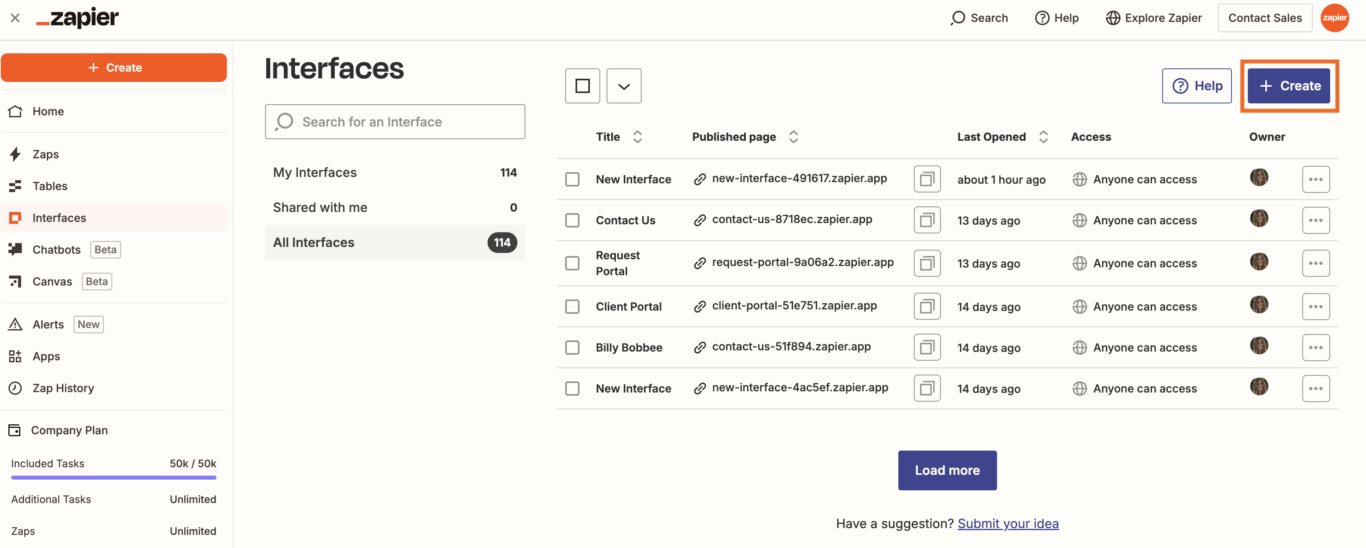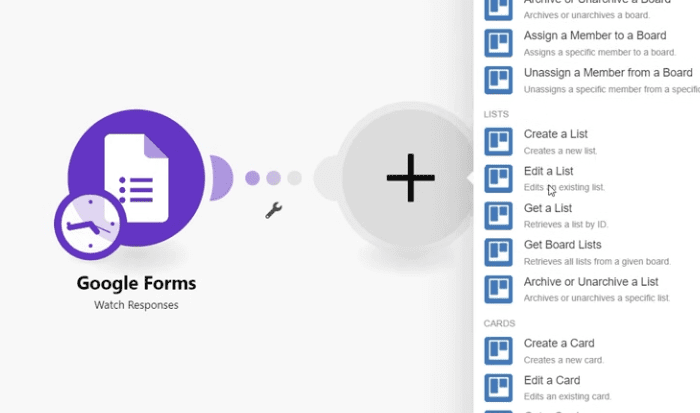No-Code Integration Platforms: The Complete Guide for Enterprise Teams in 2025
Data silos aren’t just inconvenient. They can completely derail important projects and create misunderstandings between departments. Worse, they’re expensive. According to data from Gartner, poor data quality costs organizations $12.9 million a year on average. Poor data quality can be caused by improper practices and rigid workflows but, in most organizations, data silos are the primary contributor.
Think about the tools you use every day, like Salesforce, ServiceNow, or Jira. How easy is it for a team working in one of them to get the data they need from other sources? Can they easily share their data with someone else?
Typical solutions to data silos often don’t work. Copying and pasting data between tools is time-consuming and forcing everyone to use a single tool rarely sticks. Enterprise teams need no-code integration platforms that can be deployed in days, not months, while truly syncing data back and forth between tools.
Here’s a breakdown of these platforms—and of your options.
What is a no-code integration platform?
A no-code integration platform is a piece of software that bridges the gap between two (or more) other platforms, moving data between them without forcing you to write code to set them up. Typically, these platforms offer a visual interface you can use to build and customize your integration. Some have drag-and-drop builders, while others will use dropdowns and search bars.
These platforms come in a wide range of different types:
- If-this-then-that automation: These platforms allow users to choose a trigger in one tool and an action in the other to set up their integration. Once set up, the integration will automatically look for that trigger and perform the requested action whenever it’s found. These are some of the most popular integration tools, especially with small teams.
- Native integrations: These are found right in the tools you’re looking to integrate and are typically built by the same company that built the tool. Their functionality can vary, but their primary advantage is ease of access. Usually, they’re more limited than third-party integration platforms, whether that’s in features or in available integrations.
- Two-way sync: These integration platforms create a bidirectional relationship between work items (e.g., tasks, issues, spreadsheet rows) in one tool and matching work items in another. That way, anyone working one tool automatically updates the data in the other without any extra work, and vice-versa.
- iPaaS: Short for integration platform as a service, these no-code integration platforms give you a single place for building all the integrations you need. Some offer two-way syncing, others don’t. They typically require more technical ability than other no-code integration platforms.
- iSaaS: Short for integration software as a service, these platforms serve a similar function to iPaaS solutions, but are typically far less complex to set up. Similarly, some will offer a two-way sync while others might not.
Some of these solutions only offer one-way automations, which can push data from one tool to another, but don’t allow any further interaction with that data once it’s moved. Two-way sync solutions are the only platforms that allow teams in multiple tools to interact with the same set of data from any tool.
Similarly, some solutions require significant time and technical resources to set up, while others can be deployed in days. This is an important dimension to investigate before choosing a platform.
Why basic automation tools fall short for growing teams
Automation tools are often the first type of no-code integration platform most teams investigate. They are popular and often used by individuals to automate their own personal workflows. But if you try to use these platforms to support workflows for enterprise teams, you’ll run into some issues:
- One-way syncing limitations: Automation solutions can only move data in one direction. This might be enough for some workflows, but it can be artificially limiting or even catastrophic for others. Since many users try to build chains of automations to support more complex workflows, they can accidentally create infinite loops and other issues that corrupt their data.
- Template restrictions: Many automation solutions use pre-built templates to give their users access to a breadth of integrations that can be deployed quickly. But whenever your needs fall outside of these templates, you’ll have to do some significant work to get your automations working exactly as you need them to.
- Scaling problems: Automation platforms typically set their pricing based on the number of work items you need to automate. For the workflows enterprise teams rely on, this can quickly get prohibitively expensive.
- Maintenance overhead: When you build a long chain of automations to support complex workflows, you’re unwittingly signing yourself up for complex troubleshooting and maintenance tasks. When a single automation stops working, it can break the whole chain, involving hours or days of troubleshooting to get everything working right.
- Security concerns: Some of the most popular automation platforms are consumer-grade, meaning they don’t have the stringent security requirements enterprise platforms require.
Automation platforms are easy to set up and use, but the hidden costs that come with them pile up over time. That’s why most enterprise organizations need no-code integration platforms that are built with their needs in mind.
Key features of enterprise-ready no-code integration platforms
Not all no-code integration platforms are ready for enterprise needs, even if they go beyond simple automations. When you need a platform that can truly support your workflows, look for the following.
Bidirectional data synchronization
Also known as a two-way sync, this is an essential feature for no-code integration platforms. Enterprise organizations use hundreds of apps in their day-to-day operations, and maintaining proper data flow between them is a herculean task. A two-way sync platform means everyone working in these apps has all the data they need, without a long, complex chain of automations to support it all.
True two-way sync solutions also include features like automated conflict resolution and historical data handling, ensuring you’re always working with the most up-to-date data, no matter how many versions there are in your ecosystem.
Enterprise security and compliance
Enterprise organizations handle a massive amount of data, both from their customers and from their own internal processes. Integration platforms made for individuals and small teams rarely have the security features your organization needs. When looking for an integration, you should keep an eye out for the following:
- SOC 2 certification: Short for System and Organization Controls 2, this certification demonstrates that the organization behind an integration platform meets stringent security, availability, and data processing requirements.
- Data privacy compliance: Regulations like GDPR (General Data Protection Regulation) and CCPA (California Consumer Privacy Act) govern what organizations must do to protect the data of their customers. Because data integration often interacts directly with this data, the platform you choose has to support your efforts to meet these requirements.
- On-premise support: Not all integration platforms support on-premise installations of popular software like Jira or ServiceNow. On-premise software gives you more control, and a lack of support for these installations can completely disqualify an integration solution.
- Role-based access controls: An enterprise-ready integration solution should give you the ability to finely control the permissions of each user, ensuring they only have access to the projects and features they absolutely need.
Advanced workflow configuration
Enterprise organizations need integration solutions that go beyond the simple triggers found in automation platforms. The workflows these tools integrate can be quite complex, with multiple moving pieces that can completely alter the outcome of a workflow. An integration solution needs to keep up with built-in conditional logic that enables it to take the correct action as your workflow changes.
You also need the ability to customize your integration beyond basic capabilities. Custom field support is an important feature, allowing integrations to support more fields than what’s already built into your tools. Similarly, advanced filtering rules, field mappings, and other custom data transformation capabilities are essential.
Scalability and performance
An enterprise-ready integration solution has to scale with you. Your teams can send a massive amount of data back and forth for even the simplest workflows, meaning any integration you use has to support this. Some integration solutions may limit the number of API (application programming interface) requests your tools make, reducing the amount of data you can sync reliably.
Finally, you need a guarantee that the infrastructure an integration solution uses can scale with your needs. Not all providers can achieve this.
3 examples of no-code integration platforms
With a slew of integration platforms out there, you could easily spend months just researching your options. Let’s cut that time down significantly. Here are the top three no-code integration platforms available today, as well as how suited they are to enterprise teams.
Unito

Unito is a no-code integration platform with the deepest two-way integrations for some of the most popular enterprise tools on the market, including Jira, ServiceNow, Smartsheet, Azure DevOps, Asana, and more. A single Unito flow can connect projects, databases, or spreadsheets across tools, automatically syncing data back and forth between them. It’s one of the few platforms on the market offering a true bidirectional sync that enterprise teams can rely on.
Best for: Unito is best suited for enterprise teams that want a bidirectional sync with no compromises. If you need an enterprise-ready platform that truly allows you to work from your tool of choice with all the data you need at your fingertips, it’s the best option.
Main drawback: Unito’s integration library is more limited than other options on this list, focusing on enterprise-grade connectors like Jira (both Cloud and Data Center), Smartsheet, ServiceNow, and Asana.
Want to see if Unito is the best option for your team?
Zapier

Zapier is one of the most popular automation platforms out there, with thousands of integrations available. This tool uses “if-this-then-that” logic, allowing users to quickly build automations around triggers and actions. For example, you could build an automation that creates a task in Asana to match new spreadsheet rows in Google Sheets or that updates a specific field in an Asana task when a similar field is updated in another task.
Best for: Small teams or larger teams with simpler workflows. If you need an automation right now, no matter which tools you’re using, then Zapier is a solid option.
Main drawback: As an automation platform, Zapier can be pretty limited for most enterprise teams. Unless you’re willing to build a long chain of automations that requires regular maintenance, you won’t get as much out of Zapier as some other platforms.
Want to see how Zapier compares against a two-way sync platform? Check out this breakdown.
Make (formerly Integromat)

Make is an AI-powered, no-code development platform that allows users to automate workflows, manage AI agents, and more, from the same visual drag-and-drop interface. It’s one of the most advanced tools on this list, offering deep flow control, data manipulation, and custom integration support.
Best for: Enterprise teams with the technical resources to fully build out and customize their integrations. If you have the right skill level, you can leverage deep integrations that will support even the most complex workflows.
Main drawback: Deploying, running, and maintaining integrations built with Make can take a significant amount of time and technical resources. For some teams, the ROI just simply isn’t there.
Choosing the right no-code integration platform for your team
Basic automation may work for simple workflows and small teams, but it won’t cut it for enterprise organizations. True bidirectional synchronization is the only integration technology robust enough to support complex needs while being easy enough to use to deploy in days instead of months. Solutions that scale with you, with a total cost of ownership that doesn’t include expensive third-party experts, are the way to go.
While integrations solutions can be deployed at scale across a number of use cases, it’s best to start with a few, high-impact needs and scale gradually from there.


